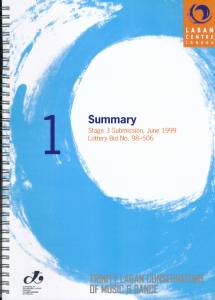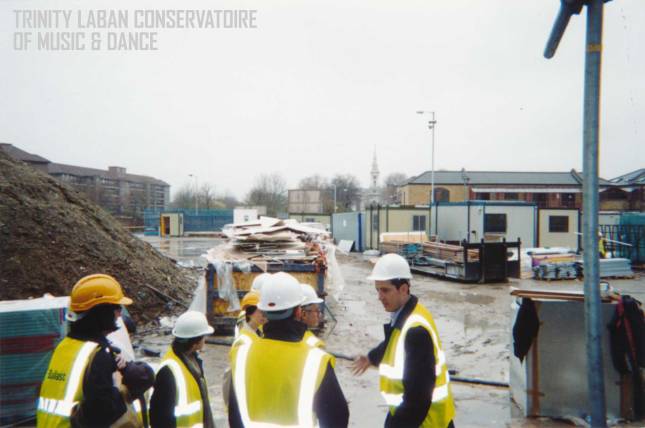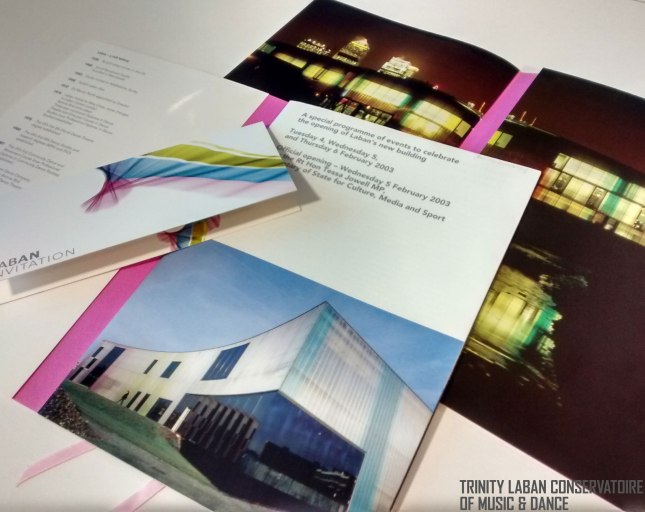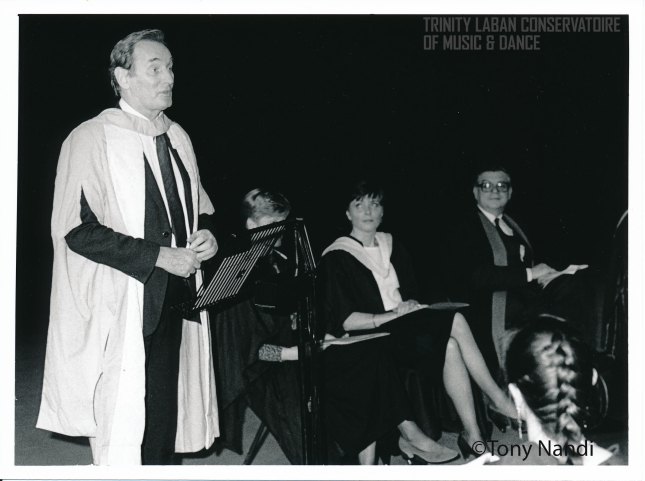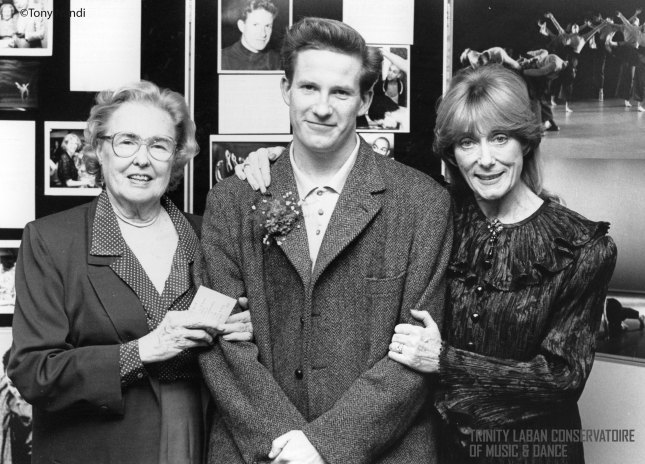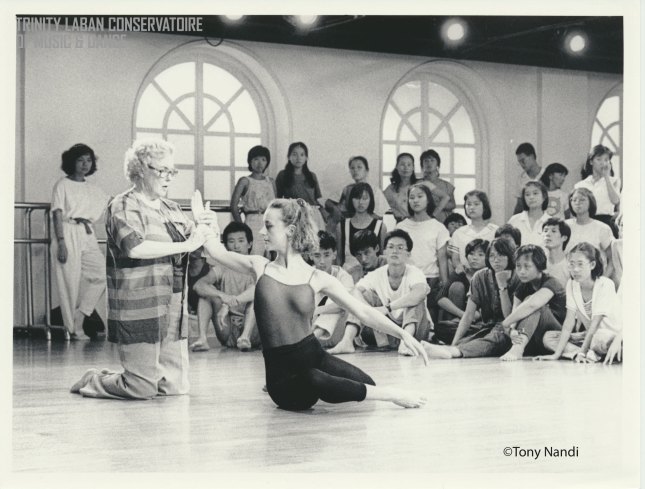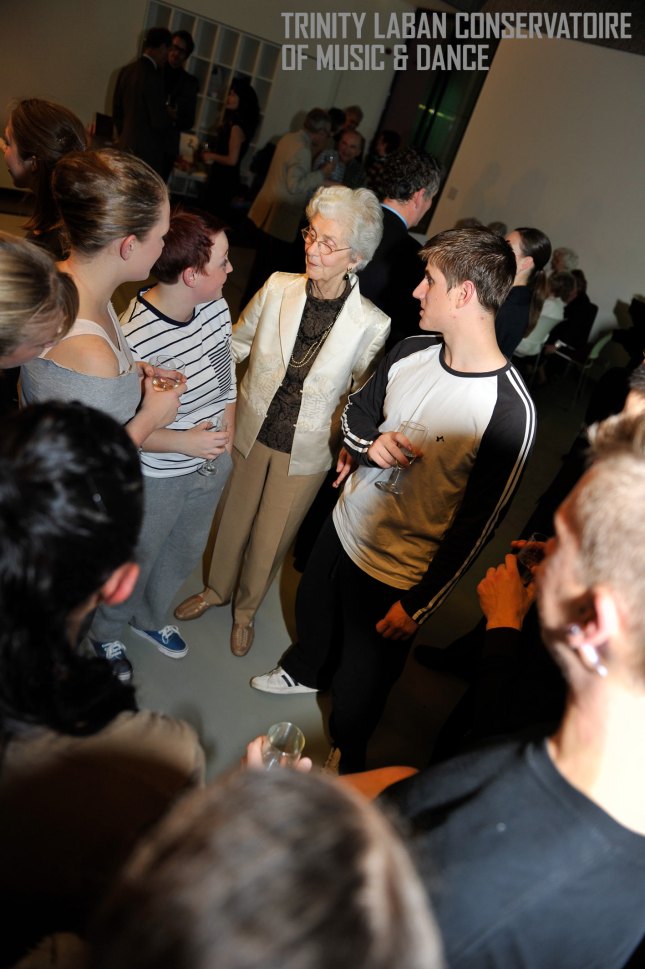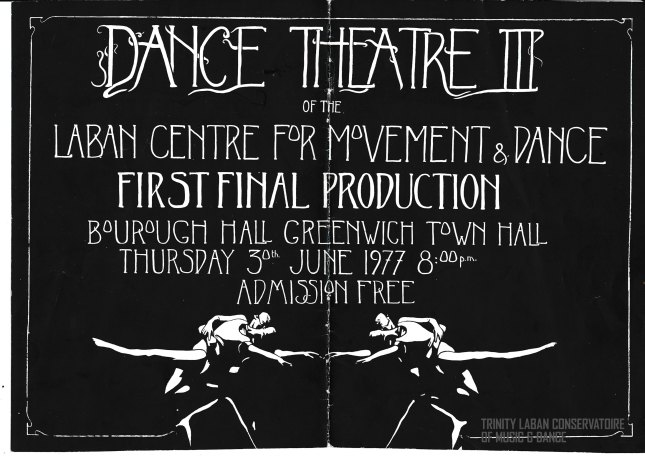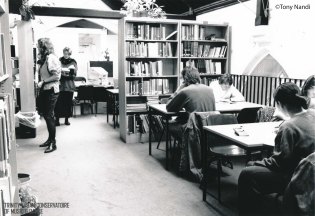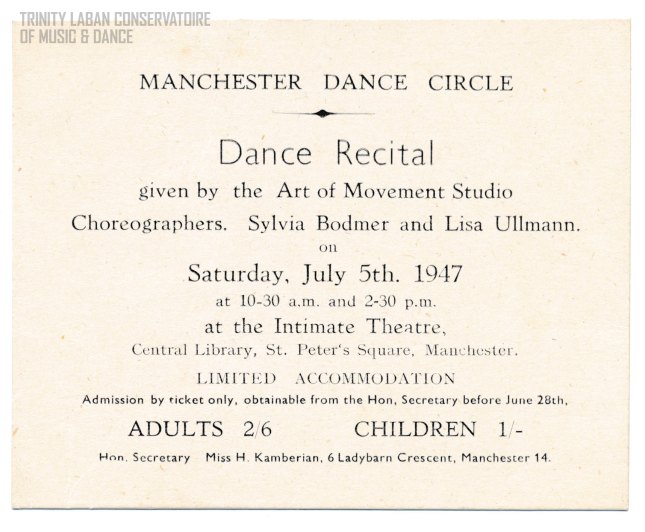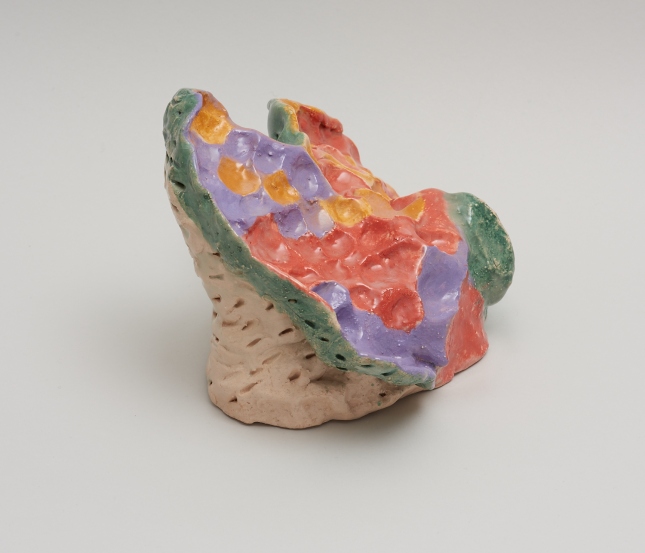


Photographs of Rudolf Laban at the Art of Movement Studio, Manchester, c1948. [RefNos: LC/A/1/4/18, LC/A/1/3/30, LC/A/1/4/5, Laban Archive, Trinity Laban Conservatoire of Music and Dance]
In 1938 Rudolf Laban arrived penniless and destitute in the UK, a refugee from Nazi Germany. By the time of his death in 1958 his school, the Laban Art of Movement Centre in Addlestone, Surrey was flourishing, his ideas on movement in education were becoming widespread in schools and colleges across the UK, and his ideas on movement in drama were being taught at theatre schools. But who was he and why did he come to the UK? And what had he done in his life before he arrived in Dover at the age of 59?
Valerie Preston-Dunlop first met Rudolf Laban when she was 16 and a new student at the Art of Movement Studio in 1947. Rudolf Laban was 68 by then and a somewhat reclusive figure who spoke English with ‘a very dark voice and strong German accent’ (Quote from Petit, June (2012) at 30min 7secs]. It wasn’t until many years later after Valerie had travelled extensively throughout Europe meeting people who had known and worked with Rudolf Laban, that she discovered just how prestigious a career he had had in Germany before falling foul of the Nazi regime and fleeing to Paris and the UK.
Much has now been written about Rudolf Laban’s life and career, not least the book Rudolf Laban: An extraordinary life by Valerie Preston-Dunlop (1998) London, England: Dance Books. A brief summary can be found on the Trinity Laban website.
But we wanted to find out what he was like as an educator and as a human being. So we interrogated the Laban Archive to find out.
Here is Sylvia Bodmer, one of Laban’s pupils in the 1920s in Germany who went on to have a distinguished dance career, talking about Laban. Bodmer had participated in Laban’s summer dance workshops in 1922 in Gleshendorf, a village in north Germany, where the dancers experimented with movement outside in the thistle-laden meadows:
[RefNo: D1/H/3/2, Laban Archive, Trinity Laban Conservatoire of Music and Dance]
She refers to Laban having ‘women all around’. During the course of his life he married twice and fathered nine children by five different women and had many mistresses.
In this audio interview Bodmer talks to Valerie Preston-Dunlop about Laban’s teaching methods at Gleshendorf:
[RefNo: LC/E/1/3/A/1, Laban Archive, Trinity Laban Conservatoire of Music and Dance]
Having managed to get out of Germany and eventually arriving in the UK in 1938, Laban joined up with Lisa Ullmann, Sylvia Bodmer and others and ran modern dance holiday courses up and down the country. Margaret McCallum, a dance teacher in schools in the UK at the time, took part in modern dance holiday courses at Bedford College of Physical Education in 1942 and at St. Margaret’s School in Bushey, taught by Rudolf Laban and Lisa Ullmann.
Here McCallum describes what Laban taught her to Valerie Preston-Dunlop:
[RefNo: LC/E/1/20, Laban Archive, Trinity Laban Conservatoire of Music and Dance]
McCallum mentions Rudolf Laban’s work with factory girls and finding economical ways for them to work. Britain in the early 1940s was ‘in the throes of an all-out war effort’ (Preston-Dunlop, p. 218). Laban teamed up with Frederick Lawrence, a management consultant concerned with work efficiency in industry, and together they tackled the problem of enabling women to undertake the heavy lifting and industrial jobs previously done by men. Laban introduced the use of momentum, so that through swinging movements of the whole body, women could achieve what men had done using leverage of their arms. He also applied the concepts of movement harmony so that a job requiring a downward pressure for example would have an upward movement to release that pressure incorporated into the movement phrase (Preston-Dunlop, p.223).
Joy Walton taught dance in schools just after the war. She attended workshops in the early 1940s run by Rudolf Laban. Here Walton talks about Laban, the way he taught her and her fellow students and the kind of person he was:
[RefNo: LC/E/1/19, Laban Archive, Trinity Laban Conservatoire of Music and Dance]
Marion North became a student at the Art of Movement Studio in the early 1950s. By 1956 she had become a teacher at the Studio and in that year went on a voyage to the United States of America to expand her experience and studies. She and Laban exchanged many letters during the course of her travels and they reveal a close and caring relationship between them. Here is an extract from a letter from Laban to North where he warns her of the work ahead once her trip is over:
“But don’t expect too much of a happy continuation of your free experiencing of the world and of personal satisfaction. The mastery [underlined] of life demands a lot of abdication in this respect. Becoming a master is almost the death of happy journeymanship, with a lot of complicated responsibility for the whole rather than for one’s own elation. This is what I, old fool, have forgotten in the uproar of our separation, and I would not be worth [sic] of your friendship if I would not tell you what I think now about it. Strange to say, I [illegible] myself have ripened – a bit late, isn’t it? – through my relatedness with you and I am grateful for that.”
[RefNo: D4/2012/15/11/10/2, letter dated 19th August 1956. Laban Archive, Trinity Laban Conservatoire of Music and Dance]

Photograph of Leni Heaton, Lisa Ullmann, Rudolf Laban and Adda Heynssen eating Easter cake outside at the Art of Movement Studio, Addlestone, 1957. Photographer: Marion North. [RefNo: LC/A/1/5/67, Laban Archive, Trinity Laban Conservatoire of Music and Dance]
North went on to become the Principal of the Art of Movement Studio, renamed the Laban Centre for Movement and Dance, in 1973. We shall hear more of her story in later blog posts as we continue our history of what is now the Faculty of Dance at Trinity Laban, in this our 70th year.
Next month we focus on the life and career of another of the big names in our history, that of Sylvia Bodmer.
Bibliography
Bodmer, Sylvia (1980s) [Recording of interview with Sylvia Bodmer]. Sylvia Bodmer Collection (D1/H/3/2). Laban Archive, Library and Archive, Faculty of Dance, Trinity Laban Conservatoire of Music and Dance, London, England.
Bodmer, Sylvia (1985) [Interviews with Sylvia Bodmer]. Laban Collection (LC/E/1/3/A/1). Laban Archive, Library and Archive, Faculty of Dance, Trinity Laban Conservatoire of Music and Dance, London, England.
Laban, Rudolf and North, Marion (1956) [Laban 1956. Original letters between Marion North and Rudolf Laban during this year; transcripts and originals]. Marion North Collection (D4/2012/15/11/10/2). Laban Archive, Library and Archive, Faculty of Dance, Trinity Laban Conservatoire of Music and Dance, London, England.
McCallum, Margaret (2004) [Interview with Margaret McCallum and Christine Edwards]. Laban Collection (LC/E/1/20). Laban Archive, Library and Archive, Faculty of Dance, Trinity Laban Conservatoire of Music and Dance, London, England.
Petit, June (2012) [Recording of interview between Jane Fowler and June Petit (nee Preston), concerning June’s experiences as a student at the Art of Movement Studio, Addlestone between 1958-1959]. Laban Collection (LC/E/1/26). Laban Archive, Library and Archive, Faculty of Dance, Trinity Laban Conservatoire of Music and Dance, London, England.
Preston-Dunlop, V. (1998). Rudolf Laban: An extraordinary life. London, England: Dance Books Ltd.
Walton, Joy (2004) [Interview with Joy Walton, a former pupil of Rudolf Laban’s]. Laban Collection (LC/E/1/19). Laban Archive, Library and Archive, Faculty of Dance, Trinity Laban Conservatoire of Music and Dance, London, England.


